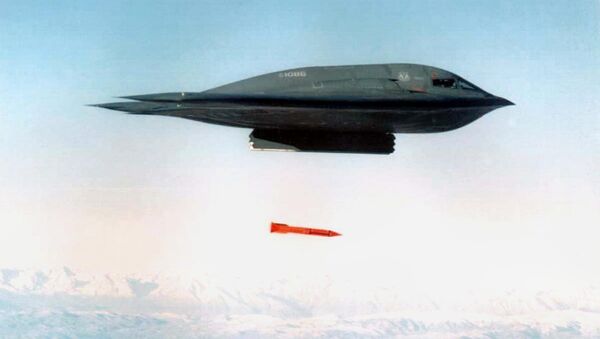WASHINGTON (Sputnik) — On July 1, for the first time the US Air Force and National Nuclear Security Administration successfully tested an unarmed guided nuclear gravity bomb, or B61-12, as they attempt to upgrade the aging traditional gravity bomb.
“As long as nuclear weapons continue to exist, the United States needs to keep its stockpile safe, secure and effective,” Harvard University Professor Matthew Bunn said on Friday.
Five variations of the B61-12 as well as a B-84, the most powerful freefall bomb in the US arsenal, currently exist, and each is deployable on different aircraft.
On Friday, Federation of American Scientists Nuclear Information Project Director Hans Kristensen said long-term planning against other nuclear nations drives US modernization.
“If you are a nuclear weapons state there is always something to be concerned about when another nuclear weapons state are developing nuclear weapons that could be used against you.”
But Bunn, who is also co-principal Investigator for the Belfer Center's Project on Managing the Atom, argued the “life extension” program for the B61-12 bomb has become “fantastically” expensive.
Upgrading a bomb costs “over $10 billion, more than it would cost to make replicas of every bomb out of solid gold,” he said.
Bunn argued the debate should be focused on whether or not the United States really needs to spend an estimated $1 trillion over the next 30 years to replace weapons in its nuclear stockpile.
“We need to focus on locking down nuclear materials around the world to keep them out of terrorist hands, stemming the spread of nuclear weapons to additional states.”
The US National Nuclear Security Administration has previously stated that it is looking to refurbish both nuclear and non-nuclear components of B61-12 bombs to extend their service life while improving its safety, security and reliability.

